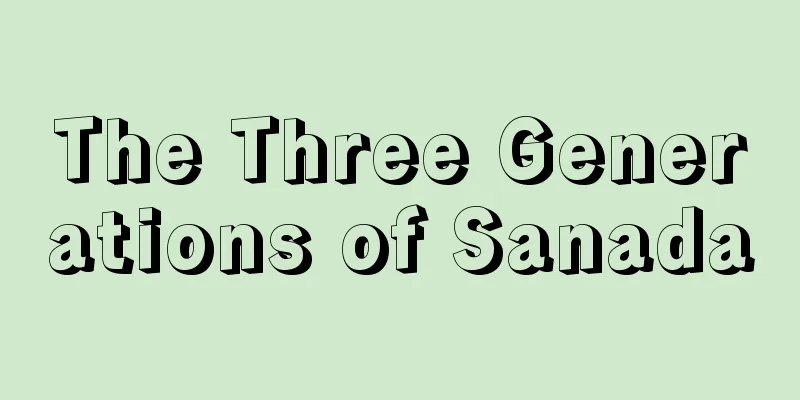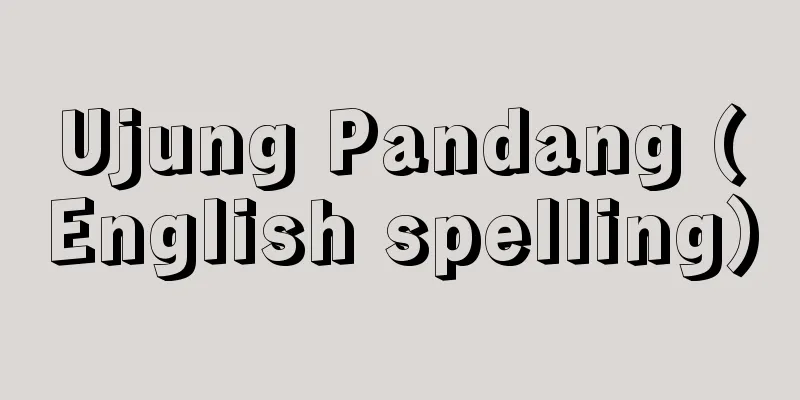Gokan

|
A type of kusazoshi (illustrated novels) from the late Edo period. The Kansei Reforms (1787-1793) regulated publishing, causing kibyōshi (a type of illustrated novel) to lose its characteristic humor, wit, and satire, and instead to emphasize morality in keeping with the times, and stories of revenge praising loyalty and filial piety became popular. As a result, plots became more complicated and long serial stories became more common. As a result, kusazoshi, which had previously been five pages in a book and several books in a volume, began to be bound together in a book. The format is the same as previous kusazoshi, nakahon type (46-size, approximately 18 cm long and 13 cm wide), with a gorgeous Nishikie print cover, and black-ink illustrations on every page, as well as many with nishikie prints and black-ink frontispieces. This style was seen as early as the end of the Kyowa period (1801-1804), and the term "gokan" also appeared in 1804 (Bunka 1), but it can be said that it did not become widely used until after 1806, when works such as "Ikazuchitarou Goaku Monogatari" by Shikitei Sanba were published. Due to the subject matter, it is characterized by its familiarity and fantasy, with many bloody and grotesque depictions, and a strong sense of ethics that favor power over justice. In the early days, Santokyoden was the representative author, and many of his short stories were written in one go, using the ideas of yomihon (reading books) that arose around the same time, as well as folk tales and legends as material. Later, Ryutei Tanehiko took over and incorporated the ideas of kabuki in his "Shohonjitate" (1815-1831), which was a success, and since then, it has become popular to draw the faces of characters in his stories using caricatures of actors. Kyokutei Bakin, a famous novelist, also wrote "Keisei Suikoden" and other works by adapting Chinese novels, which helped to make them longer, and inspired Tanehiko to adapt "The Tale of Genji" and write "Nise Murasaki Inaka Genji." The suppression of freedom of speech caused by the Tenpo Reforms (1841-1843) forced the genre into a slump, and the legendary aspects were expanded only in the grotesque and sensual aspects, and in the Meiji era, it eventually evolved into newspaper novels and serialized novels in magazines. [Toshihiko Uda] "Suzuki Juzo, Daitokyu Memorial Library Lecture Series 9: On the Collected Volumes" (1961, Daitokyu Memorial Library) [Reference] |A collection of scrolls, Part 1, by Shikitei Sanba, National Diet Library "The Tale of Raitaro's Evil" Part 4, Part 1, Written by Ryutei Tanehiko, Illustrated by Utagawa Kunisada, Published in 1831 (Tenpo 2), Owned by the National Diet Library "Genji from the Countryside" Source: Shogakukan Encyclopedia Nipponica About Encyclopedia Nipponica Information | Legend |
|
江戸後期の草双紙(くさぞうし)の一態。寛政(かんせい)の改革(1787~1793)による出版取締りで、黄表紙(挿絵入り小説の一種)が、その特質ともいうべき滑稽(こっけい)さ、洒脱(しゃだつ)さ、風刺性を失い、時代に同調した教訓性を前面にたてて、忠孝を賞揚する敵討物(かたきうちもの)が盛行し、それに伴い、筋立てが複雑化して長編の続き物が多くなった。そこで、これまで5丁を1冊とし、数冊を1編としていた草双紙を1冊に合綴(がってつ)するようになった。判型はこれまでの草双紙と同じく中本型(四六判、縦約18センチメートル・横13センチメートル)で、表紙は華麗な錦絵(にしきえ)刷りで描かれ、全ページに墨印の挿絵が入るほか、錦絵刷りや墨印の口絵のつくものも多い。この体裁は早く享和(きょうわ)(1801~1804)末年にみられ、合巻という語も1804年(文化1)には現れるが、広く普及したのは式亭三馬の『雷太郎強悪物語(いかずちたろうごうあくものがたり)』などが出た1806年以後とみてよい。 その題材から通俗性と伝奇性を特徴とし、血みどろでグロテスクな描写が多く、倫理観も正義より力といった感が強い。初期には山東京伝(さんとうきょうでん)を代表的作者として、読み切りの短編が多く、時を前後しておこった読本(よみほん)の趣向や民話、伝説などを素材としたが、その後を受けた柳亭種彦(りゅうていたねひこ)が『正本製(しょうほんじたて)』(1815~1831)で歌舞伎(かぶき)の趣向を取り入れて成功をみて以来、作中人物の顔なども役者の似顔絵で描くことが流行した。読本作者として名高い曲亭馬琴(きょくていばきん)も中国小説の翻案によって『傾城水滸伝(けいせいすいこでん)』などを書き、合巻の長編化に一役買い、これに触発されて種彦は『源氏物語』を翻案して『偐紫田舎源氏(にせむらさきいなかげんじ)』を書いた。天保(てんぽう)の改革(1841~1843)による言論弾圧で、以後沈滞を余儀なくさせられて、伝奇的な側面が猟奇的、官能的な面でのみ拡大され、明治になると、ついに新聞小説や雑誌の連載小説に発展解消した。 [宇田敏彦] 『鈴木重三著『大東急記念文庫講座シリーズ9 合巻について』(1961・大東急記念文庫)』 [参照項目] |合巻仕立て 前編 式亭三馬著国立国会図書館所蔵"> 『雷太郎強悪物語』 第4編 上 柳亭種彦作 歌川国貞画 1831年(天保2)刊国立国会図書館所蔵"> 『偐紫田舎源氏』 出典 小学館 日本大百科全書(ニッポニカ)日本大百科全書(ニッポニカ)について 情報 | 凡例 |
Recommend
Letterer-Siwe disease (English name) LettererSiwedisease
…It may occur in both eyes. (7) Letterer-Siwe dis...
Berlage - Hendrik Petrus Berlage
Dutch architect. Born in Amsterdam and died in Th...
Brunhilde (English spelling)
550-613 She was the wife of Sigibert, King of Aust...
Fernico
…Kovar is the trade name for an alloy of nickel, ...
Microfilm
Photographic film used to reduce and preserve book...
Copenhagen - København
The capital of Denmark. It spans the islands of Z...
Gila monster (English spelling)
...Of the approximately 3,000 species of lizards,...
Marne [river] - Marne
A tributary of the Seine in northeastern France. I...
Cooking table - Kansho
…On the other hand, the “hu fu” (bed) seen in Han...
Bank of Japan notes - nihonginkoken
Banknotes issued by the Bank of Japan as the centr...
Tracheal gills - Tracheal gills
〘 noun 〙 A respiratory organ found in the larvae, ...
Singer Manufacturing Co. (English)
…In 1850, IM Singer succeeded in producing the fi...
Sarakēnoi (English spelling)
…the name used for Muslims in Europe, especially ...
Electric discharge
When a strong electric field is applied to an ins...
Aythyini
…(4) Somateriini: A group that breeds in the far ...









